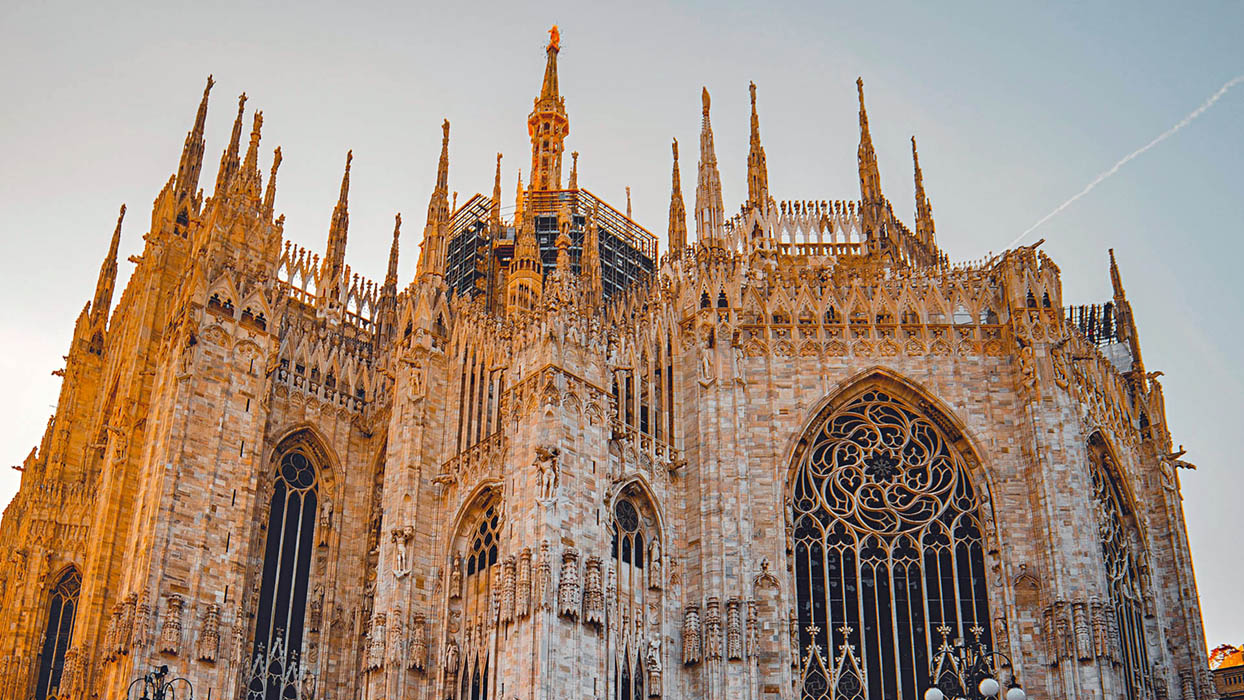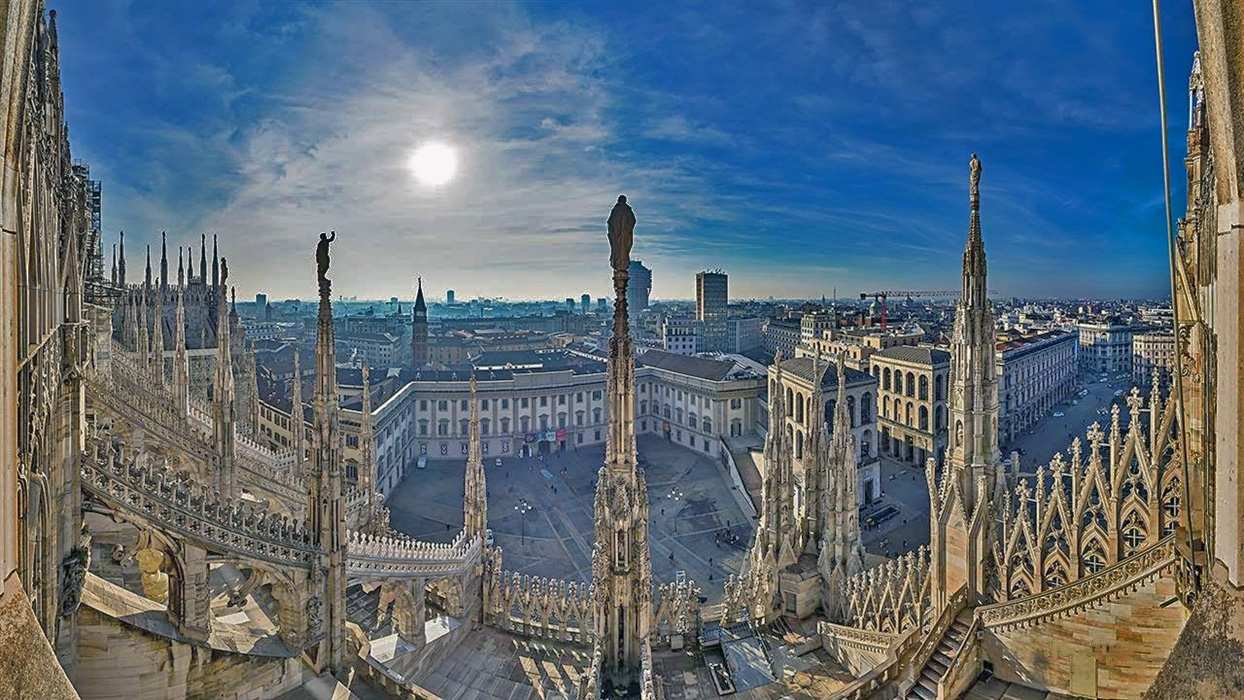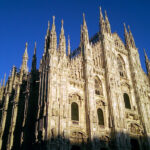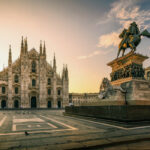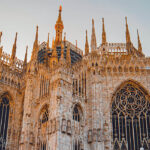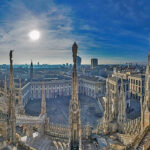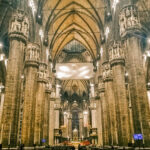Milan – Il Duomo
The construction works for the Milan Cathedral began when the Gothic style of the cathedrals had already reached its peak in 1386. It was decided to build the cathedral on the site of the ancient basilicas of Santa Maria Maggiore and Santa Tecla, whose remains, together with those of the Baptistery of San Giovanni alle Fonti, are still visible within the Archaeological Area.
For this purpose, in October 1387, at the urging of Gian Galeazzo Visconti, Lord of Milan, the Veneranda Fabbrica del Duomo was established, with the aim of carrying out the design and construction works of the Cathedral. Gian Galeazzo’s decision to use Candoglia marble instead of traditional Lombard brick was accompanied by a true revolution in style, through the choice of Gothic, which forced the Fabbrica to look for engineers, architects, sculptors and stonemasons in the construction sites of half of Europe’s cathedrals. The lively exchange space of the most diverse ideas, experiences and manual skills expressed by masters from all over the continent made the Duomo a crossroads of peoples and cultures and the most European of Gothic cathedrals.
The succession of architects and engineers at the helm of this innovative and original construction site makes it impossible to trace the project’s secure paternity.
Construction began with the apse, with its beautiful and imposing stained-glass windows, and continued towards the transept and the first bays of the aisles, leaving the age-old problem of closing the vault hanging.
On October 16, 1418, Pope Martin V, returning from the Council of Constance, consecrated the main altar.
At the end of the fifteenth century, the greatest architects and artists of the time, including Leonardo da Vinci, undertook the enterprise of designing the lantern. This phase also ended with a choral decision, and the construction continued, opening a new season for the Duomo site, inspired by Carlo Borromeo’s pastoral. The Council of Trent, in fact (1545-1563), with its decrees, inaugurated the Counter-Reformation or, rather, the Catholic Reformation, in opposition to the Protestant one. From this perspective, Carlo Borromeo, archbishop of Milan from 1564 to 1584, and Federigo Borromeo (archbishop from 1595 to 1631) inspired their interventions in the Duomo to the concepts and forms of the papal Rome’s ecclesiastical architecture and furnishings, giving a new imprint inside the Duomo: the grand architectural plan of the presbytery, the side altars, the crypt, the baptistery, and the floor. The San Carlo Panels and the wooden choir remain among the most interesting testimonies of this prolific era.
At the end of the sixteenth century, in addition, the construction of the Temple’s facade began, laying the foundations for the construction of a new front, while the old facade of Santa Maria Maggiore, which had been rebuilt further than the original location, was demolished only in 1683. Like so many other elements of the Cathedral, even the facade had to wait a long time to achieve a definitive project, which was only achieved at the end of the eighteenth century.
Between the seventeenth and eighteenth centuries, the completion of the Lantern with the great spire and the placement of the Madonnina (1774) were completed.
The nineteenth century represented a century of great activity for the Duomo. At the initiative of Napoleon, on the eve of his coronation as King of Italy, the work of completing the facade began (1807-1813). The construction and decoration works continued, with the realization of most of the spires on the roofs and many decorated windows, made with the technique of enamelled painted glass.
The twentieth century, a century of wars and conflicts, saw the start of major restorations, the first archaeological excavations in Piazza del Duomo, and the ideal completion of the facade with the realization of doors, in fact, dating back to a relatively recent period, between 1909 and 1965.
In the second half of the twentieth century, the Fabbrica undertook the complete, structural and conservative restoration of some complex parts of the Duomo. The sixties and seventies of the twentieth century saw the institution engaged on the facade and with the second restoration carried out on the Greater Spire after the one done in 1840.
Inside the Cathedral, the complex structural restoration of the lantern pillars was certainly among the most complex interventions, while the end of the century saw the protagonists of the Construction Site the apse, the facade, and, later, the third restoration of the Greater Spire. Since 2016, the exciting challenge of restoring the Lantern and the dome has begun.



